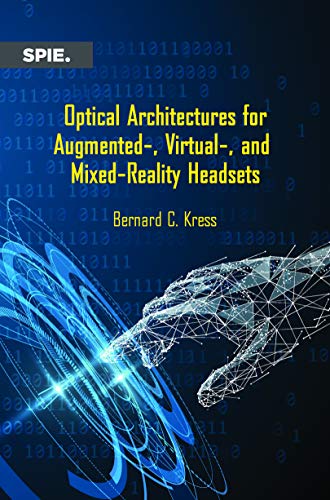Optical Architectures for Augmented-, Virtual-, and Mixed-Reality Headsets
Overview of AR, VR, and MR Headsets
Augmented reality (AR), virtual reality (VR), and mixed reality (MR) headsets are all immersive technologies that have gained popularity in recent years. AR allows users to see virtual objects overlaid on the real world, VR completely immerses users in a virtual environment, and MR combines aspects of both AR and VR.
One of the key components of AR, VR, and MR headsets is their optical architectures, which include lenses, displays, and sensors that work together to create the immersive experience for the user.
Optical Design Considerations
When designing optical architectures for AR, VR, and MR headsets, several factors must be taken into account to ensure a high-quality experience for the user.
One important consideration is the field of view (FOV) of the headset. A wider FOV allows for a more immersive experience, but it also requires more sophisticated optical designs and higher quality displays to maintain image sharpness and clarity across a larger area.
Another consideration is the resolution of the displays used in the headset. Higher resolution displays provide a more detailed and realistic image, but they also require more processing power and can increase the overall cost of the headset.
The optical design of the lenses used in the headset also plays a crucial role in the overall user experience. Lenses must be carefully designed to minimize distortion and aberrations, as well as to provide a comfortable viewing experience for the user.
Types of Optical Architectures
There are several different types of optical architectures used in AR, VR, and MR headsets, each with its own advantages and disadvantages.
One common type of optical architecture is a binocular setup, where each eye has its own display and lens system. This allows for a more realistic 3D effect and can provide a wider FOV, but it also requires more complex optics and can increase the weight and size of the headset.
Another type of optical architecture is a waveguide system, where images are projected onto a transparent display and then reflected into the user’s field of view by a series of mirrors or prisms. This design allows for a more compact and lightweight headset, but it can be more challenging to achieve a wide FOV and maintain image quality.
Some headsets use a hybrid optical architecture that combines elements of both binocular and waveguide systems to strike a balance between immersion, image quality, and comfort.
Future Trends in Optical Architectures
As AR, VR, and MR technologies continue to evolve, optical architectures for headsets are also likely to see advancements in the coming years.
One trend is the use of techniques such as foveated rendering, which selectively applies higher resolution to the area of the display where the user is looking, while reducing resolution in the peripheral areas. This can help to improve performance and reduce the computational requirements of the headset.
Another trend is the development of lightweight and compact optics that can provide a wide FOV and high image quality without adding significant weight or bulk to the headset. This can help to improve comfort and usability for users, especially during extended wear.
Overall, optical architectures play a crucial role in the design and performance of AR, VR, and MR headsets, and continued advancements in this field are likely to enhance the immersive experience for users in the future.
Product Description:
| Publisher | SPIE–The International Society for Optical Engineering (January 19, 2020) |
|---|---|
| Language | English |
| Paperback | 270 pages |
| ISBN-10 | 1510634339 |
| ISBN-13 | 978-1510634336 |
| Item Weight | 10.9 ounces |
Product Rating: 5
Price: $65.00
(as of Mar 19, 2024 12:54:39 UTC – Details)
Disclaimer: This blog post may contain affiliate links for products sold on Amazon.com. If you make a purchase through one of these links, we may earn a small commission at no additional cost to you. All opinions expressed here are our own and we only promote products that we have tested and believe in. The Univer Geek Team


